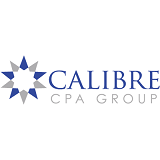
The FAR 5 Tips Corner – Implementing the new Credit Loss Accounting Standard
By Sarah McConnell, Partner, CPA, Johnson Lambert
Nonprofits are currently understanding the impact of the new credit loss standard – Financial Accounting Standards Board (FASB) Accounting Standards Codification (ASC) Topic 326 - Financial Instruments - Credit Losses (ASC 326 or the credit loss standard). The credit loss standard requires entities to record the current expected credit loss (CECL) on certain financial assets and other commitments to extend credit that are not recorded at fair value, taking into consideration historical information, current losses and, reasonable and supportable forecasts to project expected future losses.
Several financial assets that are commonly held by nonprofits are subject to the CECL reporting model:
- trade receivables arising from exchange transaction revenue (such as tuition income, membership dues, merchandise sales or registration fees)
- loans receivable
- promissory notes receivable
- grants receivable when the grant follows the exchange transaction model
The CECL model excludes related party loans and receivables between entities under common control. Contributions and grants receivable (recognized under the contribution model) are also excluded from the scope of ASC 326.
Here are five key considerations to consider when adopting the credit loss standard.
- Financial asset pooling is now required when calculating the current expected credit losses. Financial assets with similar risk characteristics are required to be reviewed collectively to determine the credit allowance.
- Credit loss is recorded for the lifetime expected losses rather than waiting for specific assets to be probable of impairment. Qualitative and quantitative aspects are required to be considered in the estimation for a credit allowance.
- Nonprofits can still use aging schedules to estimate expected credit losses for trade receivables as they represent historical payment patterns, but additional considerations should be added for current conditions and future expectations. New inputs, such as prospective forecasts, when available, should be included to reflect the use of reasonable and supportable forecasts.
- Changes in expected credit losses are recorded each year through the statement of activities. Adjustments can increase or decrease the credit loss each year.
- Consistency of estimation methods is expected from one reporting period to the next.
There are other significant components of ASC 326 that should be considered when adopting this standard. Please refer to the full standard and the required financial statement disclosures when implementing this new credit loss standard.

























